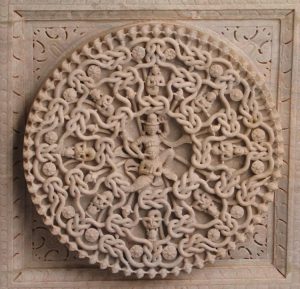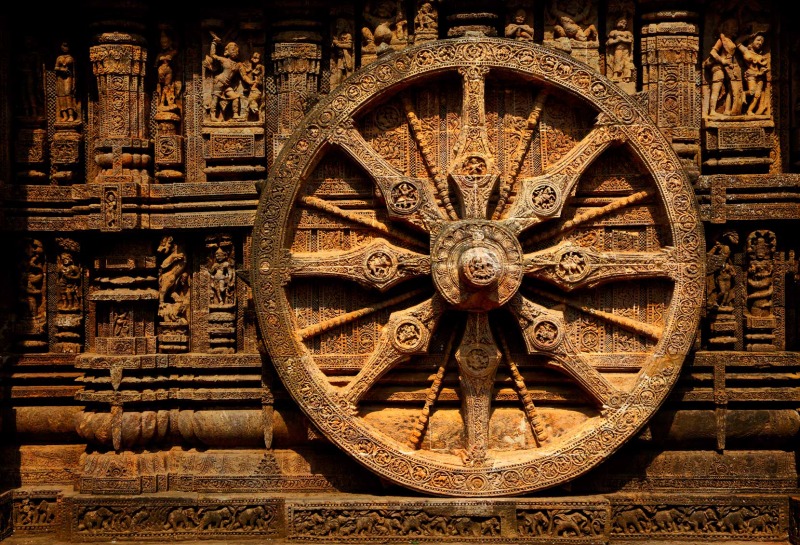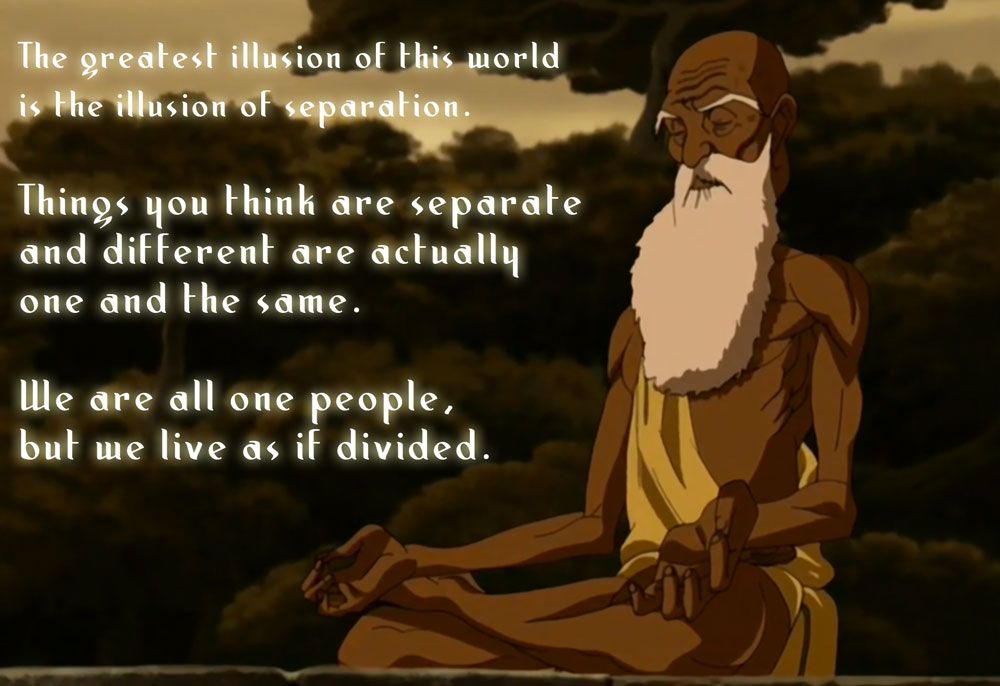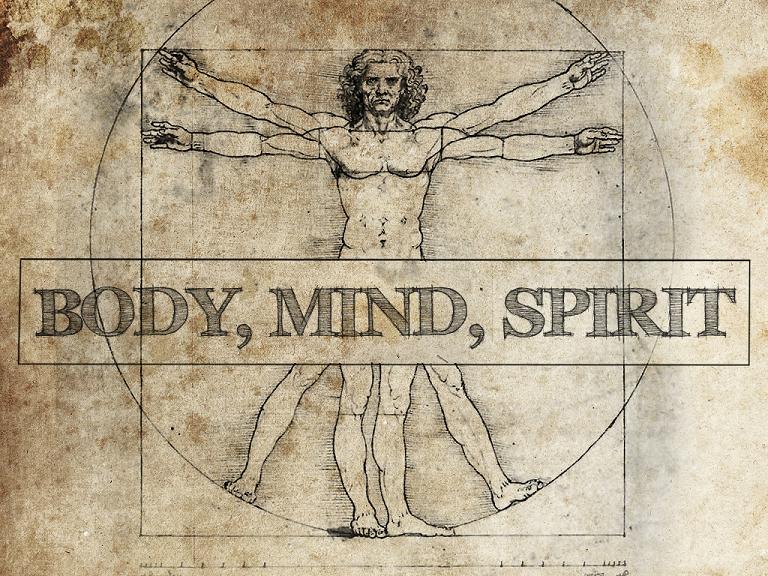9 Ways Hinduism is Remarkably Similar to Mormonism pt. 1
I am a Mormon. Plain and simple. But I believe learning about different spiritual traditions can help us understand Mormonism better. I’ve spent quite a bit of time in various scriptural texts of other traditions but one I come back to over and over is the Bhagavad Gita of Hinduism. It is pithy, plain, and colorful in its development of spiritual truths. As such, I’ve developed a healthy touch of Holy Envy of our spiritual cousins in India. Which is why I write this today…
Hinduism is one of the oldest spiritual traditions still in practice today. The roots of its origin start nearly 4,000 years ago, within the Indus River Valley. For some context, Judaism is roughly 3,500 years old, Islam is roughly 2,500 years old, and Christianity is 2,000 years old. So by the time Jesus was living and teaching in Jerusalem, Hinduism had already been around for two millennia. This 4,000-year lifespan has made the Hindu tradition incredibly rich, beautifully varied, and unfathomably wise.
Mormonism has been around 188 years—-that is only 5% of Hinduism’s age. As Mormons, we pride ourselves on having the Restored Gospel but forget that we are relative babies on the stage of world religions. Let us sit for a moment within the understanding of our spiritual cousins. The path to spiritual enlightenment is open to all. Walking this path with our hearts open could expand our understanding of our own spiritual practices. This leads us to a more mature Mormon faith that has learned from the wisdom of the ages.
Personally, Hinduism taught me more than I thought I needed to learn about my own spiritual practice. I am indebted to 4,000-years worth of sages, gurus, and monks who walked the path to enlightenment before. In scriptural books like The Bhagavad Gita, they have dutifully marked the path so others might follow. So without further ado, let us take our first steps toward enlightenment.
 1 Karma
1 Karma
Karma is a Sanskrit word meaning action, work, or deed. In its simplest form, Karma is understood as the law of what-goes-around-comes-around. But rather than being some mystical law that dishes out karmic justice to ne’er-do-wells, Karma should be seen simply as cause and effect, or action and consequence. I freely act in this universe, and my free actions shape the world. And that world returns the sum of my actions to me.
If I treat people poorly, chances are people will treat me poorly in return. This isn’t because I deserve it or karmic justice is aiming at me. When I treat people poorly, I change the world around me. I leave a bad taste in people’s mouths which makes people not want to be around me. And then when they are around me, they aren’t happy. The circumstances Karma creates are the circumstance I create.
A more robust understanding of Karma goes deeper than just action. The shape of our lives is dictated by the thoughts that flow through our heads. If my thoughts are kind, loving, and honest, so will my actions be. If my actions are kind, loving, and honest, I am more likely to create circumstances, through Karma, where my kindness and love are returned to me. If I ponder kindness, I am more likely to see other people being kind and I will be looking for opportunities to show kindness. Therefore, through my thoughts and actions, my world is created by Karma to return to me the sum of those thoughts and actions.

Mormonism’s equivalent to Karma would be the Law of the Harvest as taught by Jesus in the New Testament. We reap what we sow. Our harvest is dictated by the seeds of thought and actions we plant in our lives. Karma, or the Law of the Harvest, goes hand in hand with Mormonism’s emphasis on agency. But typically, where our focus is only on our individual capacity for action, Karma puts our personal agency in its proper global context.
My thoughts precipitate my free agency. My free agency interacts with the Karma to return to me the sum of my thoughts. But, as no man is an island, my agency exists in a world of other agents. We all participate in the Law of the Harvest, or Karma, to collectively create the world we live in. The sad state of the world at any given time is created by all of humanity. However, the happy state of any small corner of the world, our small corner, is created by our ourselves and those we love.
What kind of responsibility comes along with the Law of Karma? How must we act to create the best world for ourselves and our communities? Karma sets us up perfectly for…
2 Dharma
No direct Sanskrit to English translation exists for Dharma. This presents a problem because there are so many different ideas contained within that single word. It is full, rich, and pregnant with meaning. Notable Hindu scholar Eknath Easwaran translates the concept of Dharma as our duty to the “Universal Law which holds all life together in unity.” Elsewhere he states that Dharma is the essential order of the Universe, its integrity, and harmony.
The Universal Law that brings order, integrity, and harmony to the Universe is a law of relationality. All things, through Karma, are related to each other in one form or another. And Dharma is our responsibility to this universal relationality. What sort of responsibility do I have in a universe where everything is my neighbor?

Jesus taught a form of Dharma when He was asked what the greatest commandment was. To love God with all your heart and to love your neighbor as yourself. This teaching tells us that the responsibility I have to a universe full of neighbors is that of love. I am to love my God and the work of His hand with all my heart. And I am to love my neighbors as myself.
The Bhagavad Gita expands upon this concept of Dharma and eventually shows that, while a person’s individual Dharma is suited to their life, it all ultimately works toward the highest Dharma of love. On this law or duty hang all the laws, prophets, rituals, ordinances, and sacrifices—love.
However, one aspect of Dharma certainly distinguishes it from the Christian ethic of love. It is the necessity to work towards our Dharma without any motivation for a reward. In fact, The Bhagavad Gita makes sure you understand this one idea. Chapter 2 verses 47-49 states that “you have the right to work, but never to the fruit of work. You should never engage in action for the sake of reward… Those who are motivated only by desire for the fruits of action are miserable, for they are constantly anxious about the results of what they do.”
Dharma asks that we do our duty to love, but without care for a reward. For me, this was a hard lesson to learn. Before I read The Bhagavad Gita my mantra was “obedience brings the blessings of heaven.” I obey because I want God to bless me. However, upon closer inspection, this motivation is a bit mercenary. On the surface, I might feel like I’m obeying because I love God but at heart, I am obeying because I want the reward for obedience—heaven. It makes my relationship with God a transaction. God becomes a cosmic vending machine.
This is not a relationship of love. In fact, it is hardly a relationship at all. If our’s is to be a relationship of love, then it requires that I am not motivated to right action by want of a reward. Love is not transactional, love is a grace—a gift— given without requirement of worthiness or reward. As I live the highest Dharma of love, it changes me at an essential level and, through Karma, changes the world around me. Dharma creates a life worth living and a world worth living in. I am able to fully love my family, my neighbor, my environment, and the sometimes mundane responsibilities of life. And that is reward enough for me. Any heaven I might attain is just icing on the Dharma cake.
3 Oneness
Both Karma and Dharma rest upon the underlying truth of the Oneness of all things. One of my favorite verses of the Bhagavad Gita says, “they live in wisdom who see themselves in all and all in them” (2:55). On a physical level, this is easy to see. All things, yourself included, are made up of an assortment of molecules which are a certain assortment of atoms. All living things share much of the same DNA. In fact, the only difference between you and banana is a few variations of DNA sequences. The air I breathe has molecules of oxygen that have existed for millennia and have traveled through uncountable sets of lungs.
 But in Hinduism, this commonality goes deeper than just our bodies. Brahman is the Sanskrit word for the ultimate spiritual reality which lies at the base of all things. Everything in the world—-rocks, animals, plants, and people—-derive their existence from this Brahman. This reality pervades an understanding of Karma and Dharma. All things are so closely spiritual related that it isn’t unfathomable to see how small thoughts or actions can tug on the Karmic strings in a certain way to bring about your life circumstances. And it isn’t hard to understand why we should live the highest Dharma of love for all things when all things are your physical and spiritual neighbor.
But in Hinduism, this commonality goes deeper than just our bodies. Brahman is the Sanskrit word for the ultimate spiritual reality which lies at the base of all things. Everything in the world—-rocks, animals, plants, and people—-derive their existence from this Brahman. This reality pervades an understanding of Karma and Dharma. All things are so closely spiritual related that it isn’t unfathomable to see how small thoughts or actions can tug on the Karmic strings in a certain way to bring about your life circumstances. And it isn’t hard to understand why we should live the highest Dharma of love for all things when all things are your physical and spiritual neighbor.
This transcendent oneness of all things can be found in the Sanskrit phrase Tat Tvam Asi which translates to Thou Art That. Thou is a pronoun implying sacredness. You are a thou—-a sacred subjective individual. And you are made of the same spiritual material as that creature. Which implies that this creature is also a thou—-a sacred subjective individual. This principle elevates and makes divine every single thing in the universe. I have a sacred responsibility to act in harmony (Dharma) with this universe of sacred things.
Thou art that implies a great deal more than simply that all things are sacred. It expands the boundaries of your personal identity to include all sacred subjects. If I and a thing share the same molecules, breath the same air, and are born from the same spiritual substance, then they are much more than my neighbor. Our selves are blended together in a community of other selves all bound up in a oneness that unifies all things.
 And this oneness is not just a simple intellectual exercise. It can be experienced through prayer, meditation, and thoughtfulness. An experience with this spiritual sameness robs one of violence and increases one’s capacity for knowing and expressing love. Speaking from my own experience, I have lost the taste in needlessly killing spiders and insects. The more I seek to learn from and love even these creepy crawlies, the more I grasp their place in this world and see that a peace can exist between our worlds.
And this oneness is not just a simple intellectual exercise. It can be experienced through prayer, meditation, and thoughtfulness. An experience with this spiritual sameness robs one of violence and increases one’s capacity for knowing and expressing love. Speaking from my own experience, I have lost the taste in needlessly killing spiders and insects. The more I seek to learn from and love even these creepy crawlies, the more I grasp their place in this world and see that a peace can exist between our worlds.
This principle of oneness is more at home in Mormonism than most realize. In the Book of Abraham, we learn that God found himself in the midst of eternal intelligence and organized them into all things. We further learn through Joseph Smith in Doctrine and Covenant 93, that intelligence is the fundamental light and truth which our identities were made from. And not just our human identities—all things. There is intelligence in the trees, the animals, the rocks, and within us. Whether the Mormon concept of intelligence and the Hindu concept of universal Brahman are the same is unclear. But that Mormon theology accepts the spiritual nature of all things is telling. And the oneness of that spiritual nature is clear.
I wish that we would dwell on this more as Mormons. As I said above, experiencing this transcendent oneness through contemplation and meditation will change your life. It is one of the best ways to act with more compassion and love towards all things. Without a doubt, it was on Joseph Smith’s mind as he did the work of restoration. Without a doubt, it should be on our minds as we live and act with love in a universe of sacred neighbors.
4 All Paths Lead to Me
Chapter four verse 11 of the Bhagavad Gita presents an interesting idea. Krishna, the main deity of the book, says, “As they approach me, so I receive them. All paths…lead to me.” Hinduism and most spiritual practices of the East approach the concept of religion very differently than we do in the West. In Christianity, and especially in Mormonism, we distinguish ourselves by being a member of a specific religious organization. These ecclesial bodies are an institution or a religious government all their own. In Hinduism, however, there exists no centralized church. There are no specific beliefs one must have or specific ordinances that must be done to be a Hindu. It is all about your personal, individual, spiritual practice. If you want to be a Hindu, practice Hinduism. No formal process is required.

This is one of the first ideas that obviously clashes with Mormonism. The LDS Church and Christianity at large have capitalized on the idea of an organized church. Yes, personal spiritual practice is important, but so are the specific forms it takes, like baptism by immersion or wearing a white shirt on Sunday. And there are distinct advantages an organized church has like the speedy rendering humanitarian aid, and an increased capacity to serve the world at large. So while the idea that spiritual practice being more important than organization membership threatens the very idea of having an organized church in the first place, I still think it’s worth understanding.
The Sanskrit word for this idea is Sadhana which translates to a way of life which lead to the supreme goal. While there are some general shapes that your Sadhana can take it mainly takes the shape of your life. There are many Hindu schools of practice to aid in this process, but because the goal of Hinduism is inner development, the specific steps you take are highly individualized. Hinduism cares more about you having a spiritual practice than about it looking a certain way. This is because any spiritual practice made with devotion is accepted by Krishna. Later in the Bhagavad Gita, Krisha says,
I am the object of all worship, its enjoyer, and Lord…Whatever I am offered in devotion with a pure heart—a leaf, a flower, fruit, or water— I accept with joy. Whatever you do, make it an offering to me—-the food you eat, the sacrifices you make, the help you give, even your suffering. In this way…you will come to me…Seeking me in your heart, you will at last be united with me.
 This is a beautiful expression. Krisha doesn’t care what shape your offering takes, just that you are offering. He is so eager to be in relation with you, that even your most meager offerings are acceptable and will work toward your spiritual growth.
This is a beautiful expression. Krisha doesn’t care what shape your offering takes, just that you are offering. He is so eager to be in relation with you, that even your most meager offerings are acceptable and will work toward your spiritual growth.
All spiritual paths take on a value of their own, in this model. Every kind of life and lifestyle can be made sacred, so long as it is made in loving devotion to God and the universe of sacred neighbors. There are as many ways to be a Hindu as there are people on Earth. Perhaps this is why there are no Hindu missionaries. As a spiritual practice, they are less concerned with speaking than listening. Spiritual growth, development, and insight can be found around every corner.
So stepping back into the Mormon framework, I think the lesson to be gained with an understanding of Sadhana, is to care less about how someone else is doing Mormonism. We need to stop patrolling the boundaries and dictating who is in and who is out. As well, with our missionary efforts, people will be able to hear our message better if they see we value the spirituality they already have. Our efforts should be more holistic, as President Hinckley said, “bring with you all that you have of good and truth which you have received from whatever source, and come and let us see if we may add to it.”
5 Yoga
Yoga is perhaps the most recognizable Hindu concept, but perhaps one of the least understood. When we think of yoga, we think of postures, stretches, and movements. But, this yoga, or Hatha Yoga, is only one branch of a six-branched tree. There are five other branches that are different forms of breath control, meditation, contemplation, service, study, and specific mantras. Yoga is the forms of thought, spirit, and physical exercise that comprise your Sadhana.
 Yoga is the Sanskrit word for yoke. This word should be ringing bells for any Christian as Christ told us to take His yoke upon us. A yoke is a tool used for a unification of efforts. Literally, yoga is the practice of total unification and integration with God. It could be said that our ordinances are the yoga of Mormonism. Although, the lovely thing about yoga is that it seeks to gain unity with the body through posture and breath in an effort to more fluidly integrate our spiritual natures.
Yoga is the Sanskrit word for yoke. This word should be ringing bells for any Christian as Christ told us to take His yoke upon us. A yoke is a tool used for a unification of efforts. Literally, yoga is the practice of total unification and integration with God. It could be said that our ordinances are the yoga of Mormonism. Although, the lovely thing about yoga is that it seeks to gain unity with the body through posture and breath in an effort to more fluidly integrate our spiritual natures.
As stated, yoga is more than the postures and poses we typically think of. However, this is a wonderful starting point. How can we be expected to master meditation if we are not in unity with our bodies? How can we be expected to more fully unify our spiritual and physical nature if we are waging war on our bodies by how we eat and drink? Hatha yoga is simple and can be adapted to all levels of skill and disability.
Mormonism has a profound theology of the body but we don’t let it permeate our overall practice. The Word of Wisdom is as close as we come but the common understanding of it barely scratches the surface. Our bodies are rightly seen as gifts, but we don’t have a practice of living in unity with that body. Perhaps this is due in part to Mormonism’s roots in puritanical protestant America. But abstaining from a few substances like alcohol and tobacco is a far cry from being unified with our bodies.
 Mormonism believes that all spirit is material—just of a finer substance. Therefore, our spiritual practice is a material practice. How can we expect to bring our spiritual lives into order if we live a lifestyle that deprives the body of proper nutrition? How can we move forward with a meditative practice if our brains are constantly trying to keep up with the highs of sugary energy drinks and the crashes of food comas? Learning to live in harmony with our bodies means learning how to eat right, sleep right, and exercise right relative to our individual lives.
Mormonism believes that all spirit is material—just of a finer substance. Therefore, our spiritual practice is a material practice. How can we expect to bring our spiritual lives into order if we live a lifestyle that deprives the body of proper nutrition? How can we move forward with a meditative practice if our brains are constantly trying to keep up with the highs of sugary energy drinks and the crashes of food comas? Learning to live in harmony with our bodies means learning how to eat right, sleep right, and exercise right relative to our individual lives.
It would be wise to participate in and incorporate a practice of Hatha Yoga in our living of Mormonism. After all, Mormons believe in an embodied God and that heaven involves having a perfect union with our own bodies. We should not push into the future the work of unifying our spirit and body.
Hold Up…
https://giphy.com/gifs/right-pokmon-direct-Gtokgwof4LDag
I promised 9 ways Hinduism is remarkably similar to Mormonism and I’ve only given you 5. So head over to part 2 where we’ll find out how to meditate, commune with God, and attain enlightenment through complete unification with the universe. I know—steep promise. So go drink some Gatorade and get ready for round two.


